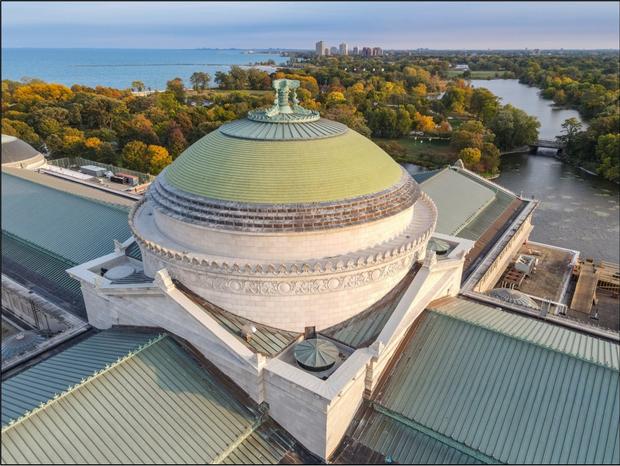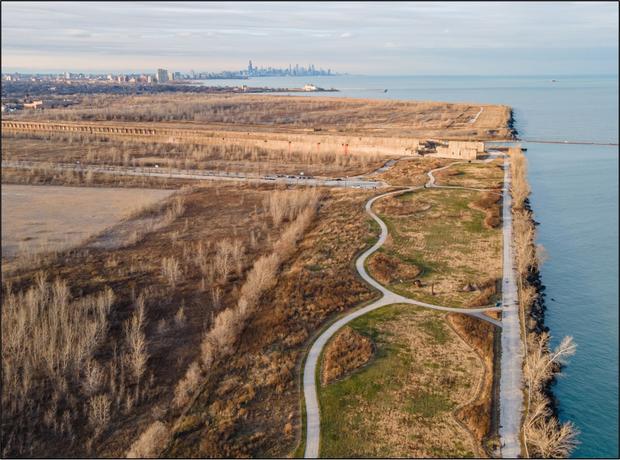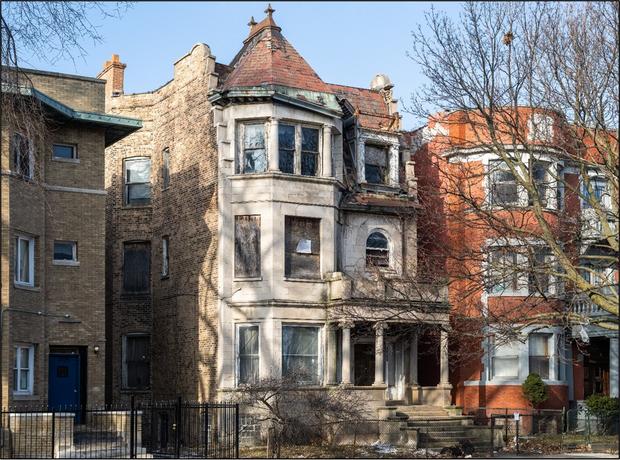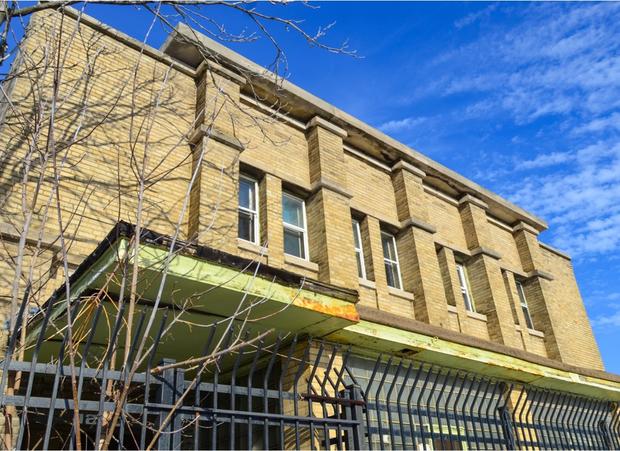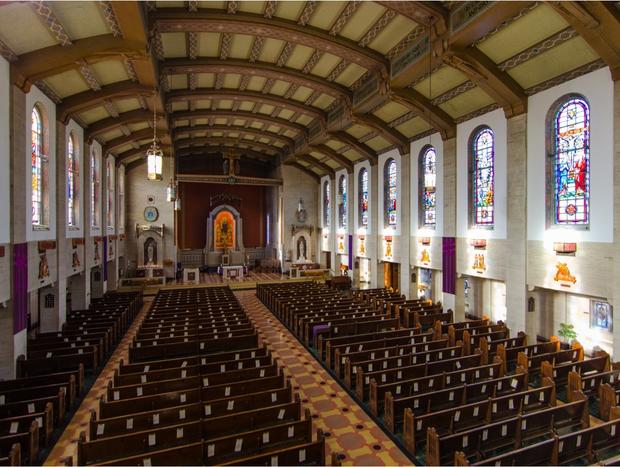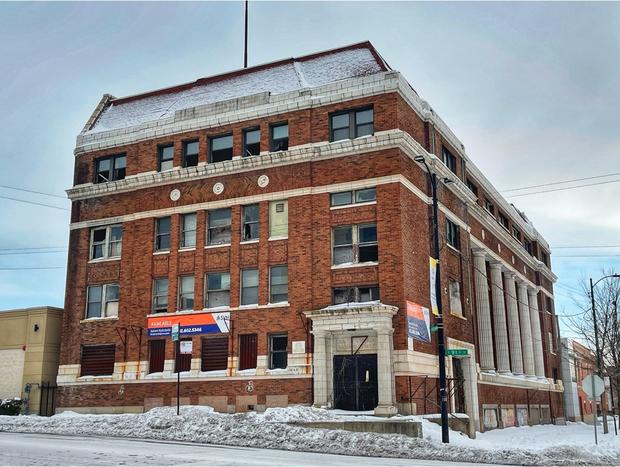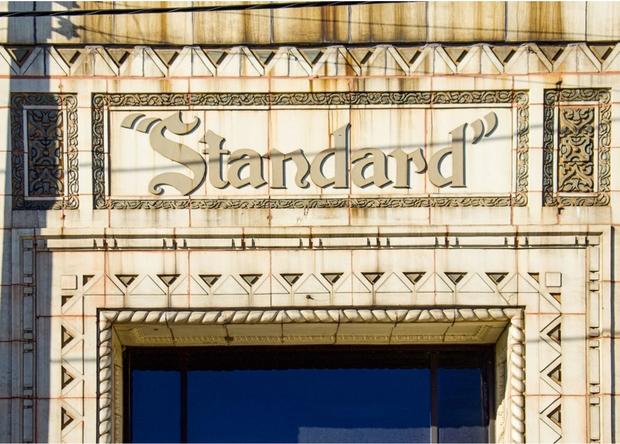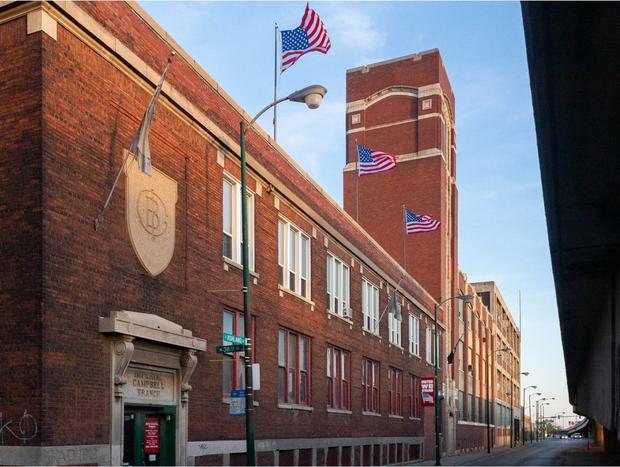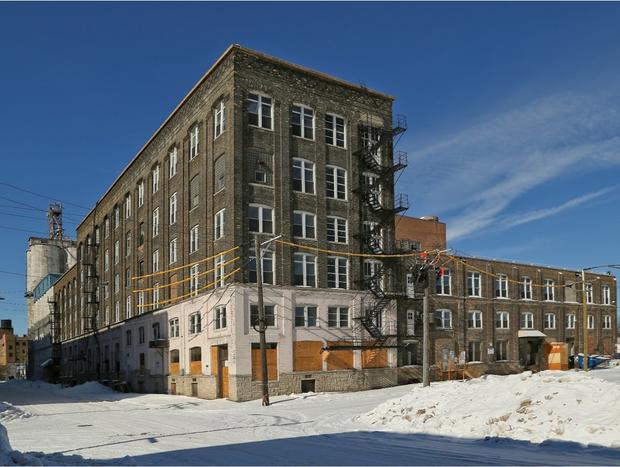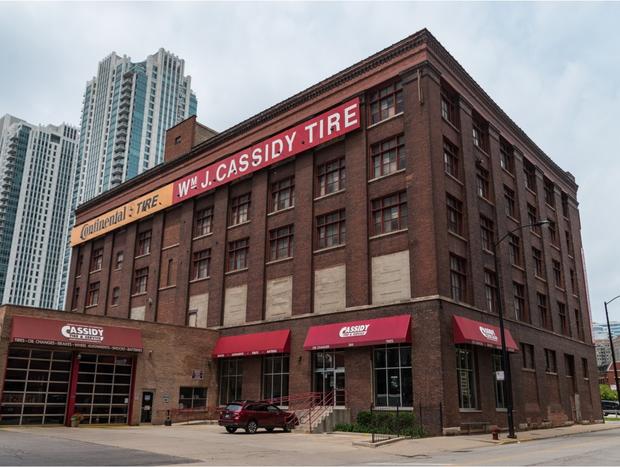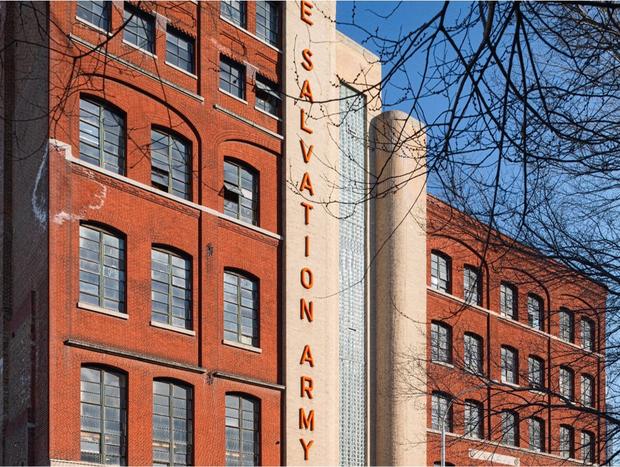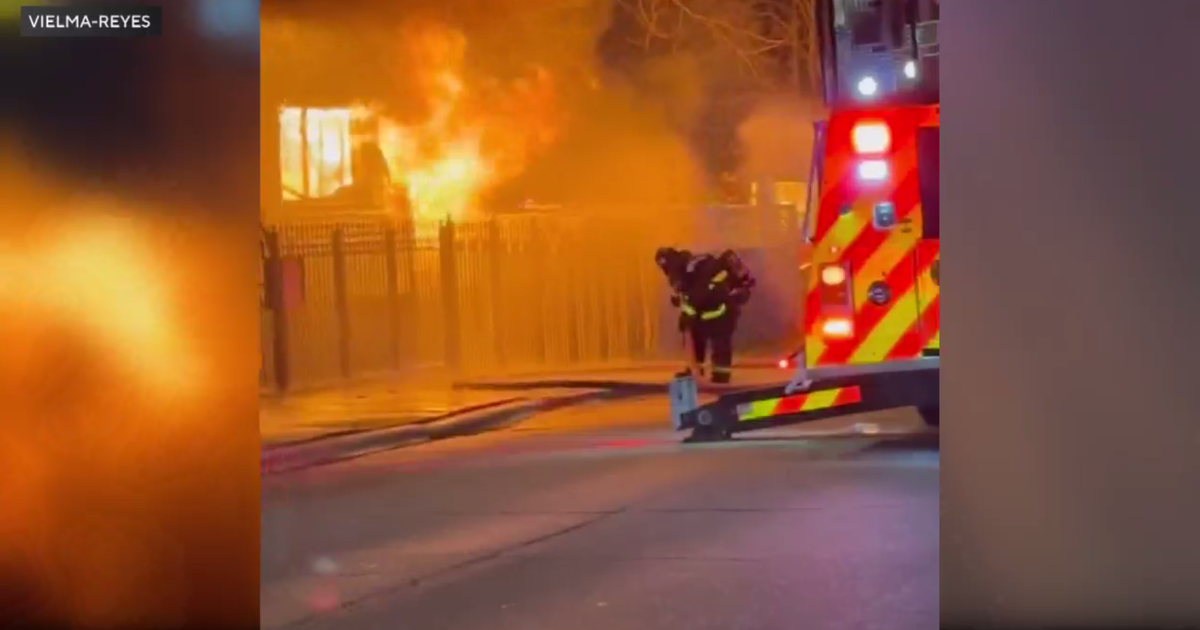Preservation Chicago Renews Call To Turn Chicago Lakefront Into National Park, Calls For Protection For Catholic Churches And West Loop Industrial Buildings
by Adam Harrington, CBS 2 Web Producer
CHICAGO (CBS) -- In announcing its Seven Most Endangered Buildings for Chicago in 2021, Preservation Chicago renewed a call to turn the city's lakefront into a national park, and also issued a push for preservation of Catholic churches and West Loop industrial buildings.
The organization released its 2021 list on Wednesday. Nominations, the group said, are chosen by the public and by preservation partners throughout Chicago.
"Chicago is known around the world as a city of architecture, for its historic built environment, and both its revolutionary architectural and engineering innovations," Ward Miller, Executive Director of Preservation Chicago, said in a news release. "These attributes are a great source of continued interest among its residents and heritage tourism. Yet, we as a city continue to lose important structures to demolition – buildings that other cities could only dream of building, of honoring, and repurposing. We also want to address quality of life issues, human scale, and important stories and events as we strive to seek a better Chicago."
The seven endangered buildings and other sites are:
The Chicago Lakefront
In calling for protections for the lakefront, Preservation Chicago invoked a proclamation that the lakefront should be "forever open, clear, and free." The quote is often attributed to Daniel Burnham, but multiple sources point out it was actually first issued by canal builders in Chicago in 1836.
However, the Burnham Plan in 1909 did call for the lakefront to be preserved and set aside for recreation. The mandate was further defended by Chicago businessman A. Montgomery Ward in the early 20th century.
But Preservation Chicago said despite that, there are still "multiple threats to the sanctity of these cherished public lands."
"With alarming frequency, Chicago's public lakefront lands are often mistaken as gifts by politically connected developers and institutions," the organization said.
Preservation Chicago specifically took issue with current plans for the 19.3-acre Obama Presidential Center south of the Museum of Science and Industry in Jackson Park.
Following an exhaustive four-year federal review process, construction of the Obama Presidential Center is expected to begin this year, with the first preliminary work starting as early as April, and actual construction coming as early as August.
The organization also took issue with a proposal that would significantly alter the shoreline along Lake Shore Drive.
A primarily federally-funded initiative called "Redefine the Drive" would cost about $3 billion to update a seven-mile stretch between Grand and Hollywood avenues, including a plan to straighten out the Oak Street S-curve and create park space from Chicago Avenue to North Avenue along the lakefront.
Preservation Chicago also made a list of "ill-conceived" proposals for the lakefront that did not end up going ahead.
In 2007, Mayor Richard M. Daley backed a plan to move the Chicago Children's Museum to Grant Park, but that proposal was scuttled in 2011.
Filmmaker George Lucas wanted to build his Museum of Narrative Art on the parking lot south of Soldier Field, but abandoned his plan and moved it to Los Angeles after a federal judge allowed the Friends of the Parks to move forward with a lawsuit challenging the museum.
Preservation Chicago also singled out Chicago's 2016 Olympic bid as something that would have had a negative impact on most lakefront parks. Chicago ended up losing the 2016 bid to Rio de Janeiro.
"There are genuine concerns that our world-famous Lakefront parklands, designed by some of the world's most well-recognized landscape designers and architects, could be further compromised and parceled-off as political giveaways. These parks have belonged to the people of Chicago for more than 150 years. No private development, regardless of how noble or popular, should be built there," Preservation Chicago said. 'Forever open, clear and free,' needs to be applicable to all of our Lakefront lands in perpetuity, from the East Side and South Chicago neighborhoods on the South Side to the Edgewater and Rogers Park communities on the City's North Side."
As it is, the entire Chicago lakefront is not actually publicly accessible or lined with park land.
On Eastlake Terrace at the north end of Rogers Park, some houses are built right up to the lake shore and have seen waves crashing up against them in recent years amid high lake levels and disappearing pocket beaches nearby.
Loyola Park and its adjacent beach provide public parkland farther south in Rogers Park, but the Loyola University Chicago Lake Shore Campus abuts the shoreline a short distance farther south still. South of the campus, high-rises that are built close to the lakefront line much of Sheridan Road south to the Kathy Osterman Beach near the north end of Lake Shore Drive.
Lakefront parks – or at minimum the Lakefront Trail – are found from there south through all the way through Jackson Park. But some east-west residential blocks in the South Shore neighborhood also have houses or buildings built up all the way to the lakefront, and the former U.S. Steel South Works site still lies vacant along the lake adjacent to the South Chicago neighborhood.
Other than naming the neighborhoods, Preservation Chicago did not address the issue of existing development or lack thereof along the lakefront. But it did call for a maintenance for the "remarkable Chicago vision" of a lakefront free of obstructions and open to all.
"We encourage the City of Chicago and the Chicago Park District to pursue a national park designation for the entire Chicago Lakefront. Chicago can partner with the National Park Services to continue the legacy of protecting this precious resource for the enjoyment of all," Preservation Chicago wrote. "Such an idea could lift and share the burden of maintenance of these sacred grounds, providing much-needed repairs to many of the park buildings and structures."
Preservation Chicago issued a similar call in 2019. Designating the lakefront a national park would require a congressional sponsor, and support from the city.
Creating a new national park in Chicago isn't unprecedented. After years of lobbying, the historic Pullman neighborhood in 2015 was designated a national monument.
In 2019, the Indiana Dunes Lakeshore also became a National Park, a move that came without any additional funding.
But when the proposal to turn the Chicago lakefront into a national park first surfaced in 2019, critics were quick to point out some pitfalls. On the Chicago Reddit page, one critic noted the adverse effect on national parks during a federal government shutdown that year.
Phyllis Wheatley Home:
The Phyllis Wheatley Club and Home is located at 5128 S. Michigan Ave. in the Washington Park neighborhood. Preservation Chicago noted that it is an important site when it comes to Black history in Chicago, and honoring Black historic sites is crucial as the city works to become more equitable.
"A stalwart and resolute group of Black women in early 1900s Chicago joined together to create the Phyllis Wheatley Home, a program to house and safeguard Black women and girls who traveled to Chicago during the Great Migration seeking employment and a better life," Preservation Chicago wrote. "Recognizing the great risk that women encountered when moving to an unfamiliar city, the women and founders of the Phyllis Wheatley Club took action to create a haven for the flourishing development and protection of the young women they supported."
The Michigan Avenue site is the third and last location purchased for the Phyllis Wheatley home. It is a limestone building constructed in 1896, Preservation Chicago said.
The building is now in disrepair with extensive code violations, and has been threatened with court-ordered demolition, Preservation Chicago said.
"This would be a tragic loss to both Black and Women's History, not only locally in Chicago, but nationally. This home is a rare gem, a surviving site tied to Black women's settlement houses and the Black suffragettes of the early years of the 20th century," Preservation Chicago said.
A group of professional Black women has already organized to mount an effort to save the Wheatley Home, and Preservation Chicago wants to see it restored as a place to honor the history in which it was involved.
Cornell Store and Flats
The Cornell Store and Flats is located at 1230-32 E. 75th St. near South Chicago Avenue in the Greater Grand Crossing neighborhood. It is a Prairie School building designed by Walter Burley Griffin – a Maywood native who is known for designing the Australian capital city of Canberra and the city of Griffith in New South Wales, Australia.
The building has two distinct principal elevations – a commercial entrance facing 75th Street and a residential entrance facing north, Preservation Chicago said.
It has also been neglected for years and its decay has been made worse by neighborhood disinvestment, Preservation Chicago said. It was almost torn down upon entering demolition court in 2016.
"Preservation Chicago is confident that there are multiple opportunities for a redevelopment project that will ensure the retention and reuse of the Cornell Store & Flats while also investing in the communities of Greater Grand Crossing and South Shore," the organization said.
Preservation Chicago said the building is currently owned by South Shore Management LLC, and said the landlord must make either work on renovations or else transfer it to an owner with a restoration plan.
The organization noted that there are vacant lots on both sides of Cornell Store and Flats, and a new development could be built with the building as an anchor.
"The building could be returned to a mixed residential and commercial use, and it is worth exploring the potential for the building as a transit hub with access to Metra Electric and South Shore train lines," Preservation Chicago said.
Roman Catholic Churches
For the second time since 2019, Preservation Chicago focused on the city's Catholic churches as the Archdiocese of Chicago moves to consolidate or close parishes.
The organization called the churches "immensely beautiful," and said they were built "at great cost, and often at significant sacrifice, with pennies, nickels, and dimes, by the faithful of the community."
The churches also often serve as neighborhood cornerstones – functioning as community centers with food pantries, shelter services, counseling, and child care, Preservation Chicago noted.
Historically, and in some cases now, Catholic churches were so important to the fabric of Chicago life and culture that people identified to one another where they live by naming the parish, the organization pointed out.
"Each church presents a unique opportunity to explore viable reuses with the community that built them," the organization said.
Preservation Chicago also called upon the city to repeal the 1987 Religious Buildings Consent Ordinance – under which religious buildings, and only religious buildings, require the consent of the owner for city landmark designation.
"This ordinance hamstrings many potential Chicago Landmark designations of some of the City's finest buildings, some constructed by the same world-famous architects of our downtown Landmarks," Preservation Chicago said.
South Chicago Masonic Temple
The South Chicago Masonic Temple is located at 2939 E. 91st St. It is a grand Masonic-order building and was designed in 1916 by Clarence Hatzfeld – the same architect behind the South Side Masonic Temple in Englewood that was recently torn down, Preservation Chicago said.
The South Chicago temple at 91st Street and Exchange Avenue has been vacant for nearly a decade, but Preservation Chicago called it an "extraordinary opportunity."
"The historic brick and terra cotta building, flanked with Doric-order columns on its west façade, holds great potential for an adaptive reuse project that could reinvigorate this Far South Side Community," Preservation Chicago said. "The City of Chicago should advance an Invest South/West project that combines the South Chicago Masonic Temple, the Ss. Peter and Paul Catholic Church across 91st Street, and other vacant and underutilized properties in the immediate area."
The organization noted that $26 million already has been reinvested in the South Chicago YMCA two blocks east, and a restoration of the temple could "further encourage redevelopment and a revisioning of the broader community."
Central Manufacturing District – Original East District
This group of buildings is located in Bridgeport and McKinley Park, bounded by Morgan Street on the east, Ashland Avenue on the west, 35th Street on the north, and Pershing Road on the south. It dates back as a district to 1902 Preservation Chicago said.
"The buildings and the original vision of a shared industrial complex is an irreplaceable artifact of industrial/manufacturing history and design both in Chicago and the United States," the organization said.
Preservation Chicago called for the creation of a CMD East Historic Landmark District to protect the remaining structures in the area – noting that one building in the district, the Spiegel Administration Building at 1038 W. 35th St., was recently landmarked individually.
West Loop Industrial Buildings
Preservation Chicago noted that many old industrial loft buildings in the West Loop are being threatened with demolition and replacement with large new high-rise and mid-rise residential and commercial buildings.
The organization pointed to three specific buildings that risk being torn down, and one where demolition is already in progress.
The Archer Daniels Midland Wheat Mill at 1300 W. Carroll Ave. was constructed as the Eckhart & Swan Company Mill and is Chicago's oldest flour mill. It was designed by the architectural firm Flanders & Zimmerman in 1897, and additions were built through 1947. It is now being torn down, and Preservation Chicago noted that demolition began before plans for new development are approved.
"Preservation Chicago recommends the City of Chicago eliminate this 'scorched earth' policy of approving demolition before alternate plans and financing for new development has been approved," the organization said.
Preservation Chicago also pointed specifically to the Tyler & Hippach Glass Company Building, also known as the Cassidy Tire Building, at 344 N. Canal St. – designed by ecclesiastical architect Henry Schlacks – and the Braun & Fitts Butterine Factory/Wrigley Lodge/Salvation Army building at 509 N. Union Ave., which is now up for sale.
Preservation Chicago advised that the Cassidy Tire building could be designated as a Chicago landmark given its association with Schlacks, and said the Salvation Army building is an "outstanding structure" that should be preserved.
The organization urged the Salvation Army, Ald. Walter Burnett (27th), and the City of Chicago to make an upfront requirement that potential buyers preserve the building.
